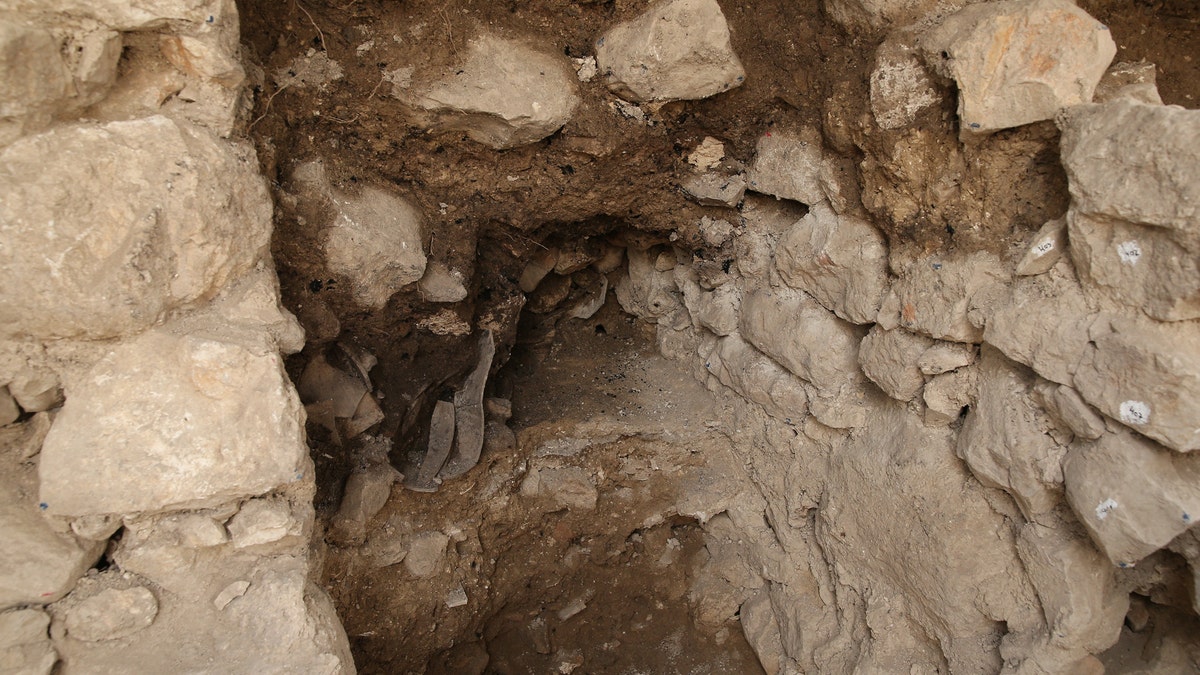
The structure in which shattered jugs were found, attesting to the destruction. (Picture: Eliyahu Yanai, Courtesy of the City of David Archive)
Archaeologists excavating the City of David in Israel’s Jerusalem Walls National Park have uncovered charred wood, grape seeds, pottery, fish scales and bones and numerous rare artifacts that date back to the city’s demise at the hands of the Babylonians more than 2,600 years ago.
Among the findings, which depict the affluence and character of ancient Jerusalem, capital of the Judean Kingdom, were dozens of jars used to store grain and liquids. Many of them have stamped handles and seals that depict a rosette.
ARCHAEOLOGISTS UNEARTH 2,700-YEAR OLD RESERVOIR IN ISRAEL
“These seals are characteristic of the end of the First Temple Period and were used for the administrative system that developed towards the end of the Judean dynasty,” said Ortal Chalaf and Dr. Joe Uziel, excavation directors for the Israel Antiquities Authority.

“Classifying objects facilitated controlling, overseeing, collecting, marketing and storing crop yields. The rosette, in essence, replaced the 'For the King' seal used in the earlier administrative system."
HISTORY'S 1ST EMOJI? ANCIENT PITCHER SHOWS A SMILEY FACE
The artifacts were found under collapsed layers of stone on the eastern slope of the City of David. One rare find was a small ivory statue of a naked woman with an Egyptian-style haircut or wig. The quality of its carving reflects the skill of the artists who lived there, the directors said.
"The excavation's findings show that Jerusalem had extended beyond the line of the city wall before its destruction,” Chalaf and Uziel said. “The row of structures exposed in the excavations is located outside, beyond the city wall that would have constituted the eastern border of the city during this period.
EXPERTS HUNT FOR BIBLICAL TABERNACLE THAT HOUSED THE ARK OF THE COVENANT
“Throughout the Iron Age, Jerusalem underwent constant growth, expressed both in the construction of numerous city walls and the fact that the city later spread beyond them. Excavations carried out in the past in the area of the Jewish Quarter have shown how the growth of the population at the end of the 8th Century BCE led the annexation of the western area of Jerusalem.
“In the current excavation, we may suggest that following the westward expansion of the city, structures were built outside of the wall’s border on the east as well."








































